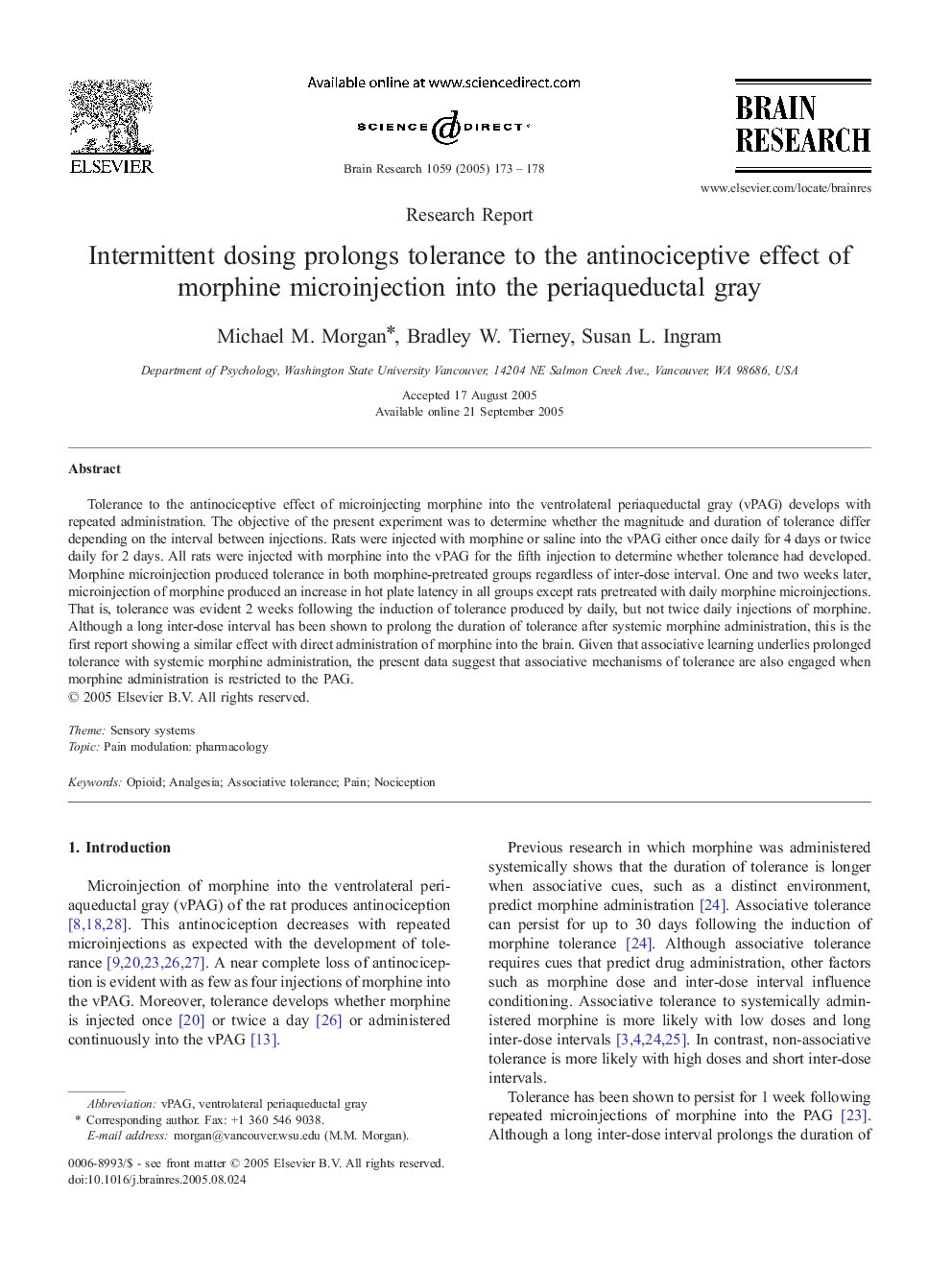| Article ID | Journal | Published Year | Pages | File Type |
|---|---|---|---|---|
| 9415874 | Brain Research | 2005 | 6 Pages |
Abstract
Tolerance to the antinociceptive effect of microinjecting morphine into the ventrolateral periaqueductal gray (vPAG) develops with repeated administration. The objective of the present experiment was to determine whether the magnitude and duration of tolerance differ depending on the interval between injections. Rats were injected with morphine or saline into the vPAG either once daily for 4 days or twice daily for 2 days. All rats were injected with morphine into the vPAG for the fifth injection to determine whether tolerance had developed. Morphine microinjection produced tolerance in both morphine-pretreated groups regardless of inter-dose interval. One and two weeks later, microinjection of morphine produced an increase in hot plate latency in all groups except rats pretreated with daily morphine microinjections. That is, tolerance was evident 2 weeks following the induction of tolerance produced by daily, but not twice daily injections of morphine. Although a long inter-dose interval has been shown to prolong the duration of tolerance after systemic morphine administration, this is the first report showing a similar effect with direct administration of morphine into the brain. Given that associative learning underlies prolonged tolerance with systemic morphine administration, the present data suggest that associative mechanisms of tolerance are also engaged when morphine administration is restricted to the PAG.
Keywords
Related Topics
Life Sciences
Neuroscience
Neuroscience (General)
Authors
Michael M. Morgan, Bradley W. Tierney, Susan L. Ingram,
